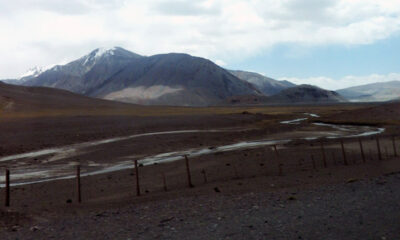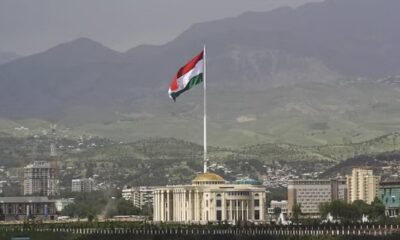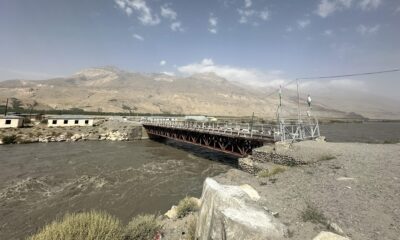Latest News
What we know and don’t know about the coronavirus

 The spread of a new coronavirus in mainland China and to 27 countries and regions beyond is alarming health experts. Here is what we know – and do not know – about the virus:
The spread of a new coronavirus in mainland China and to 27 countries and regions beyond is alarming health experts. Here is what we know – and do not know – about the virus:
HOW DANGEROUS IS THE VIRUS?
The coronavirus family of viruses includes the common cold and more serious diseases such as Severe Acute Respiratory Syndrome (SARS) and Middle East Respiratory Syndrome (MERS).
Many of those with the new virus who have died had pre-existing medical conditions or were elderly, those with weakened immune systems.
Coronavirus infections have a wide range of symptoms, including fever, cough and breathing difficulties.
Statistics from China indicate that about 2% of people infected with the new virus have died, suggesting it may be deadlier than seasonal flu but less deadly than SARS, which killed about 10% of infected individuals. The MERS outbreak in 2012 had a fatality rate of about 35%.
Scientists have labeled the new virus 2019-nCoV.
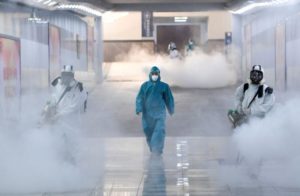 HOW IS IT TRANSMITTED AND HOW CAN IT BE PREVENTED?
HOW IS IT TRANSMITTED AND HOW CAN IT BE PREVENTED?
The virus can be transmitted via droplets when an infected person breathes out, coughs or sneezes, and can also spread via contaminated surfaces such as door handles.
Experts have said it is more easily transmitted than the SARS virus. The incubation period is up to 14 days. People may be able to infect others before symptoms appear.
The World Health Organization (WHO) recommends that people frequently wash hands, cover mouth and nose when sneezing or coughing, and avoid close contact with those who are sick.
DO FACE MASKS HELP?
“We recommend the use of masks for people who have symptoms … because the virus transmits through droplets,” says medical expert Sylvie Briand.
But they do not guarantee protection against infection.
“For people who don’t have symptoms, the mask in fact is not useful,” Briand says.
The American Centers for Disease Control’s advice is that face masks are not required for the general public.
IS THERE ANY TREATMENT?
There is no vaccine.
Chinese scientists were able to identify the genetic sequence of the new coronavirus and shared it publicly. Scientists in Australia have developed a lab-grown version of the virus, a step toward creating a vaccine.
Drugmakers around the globe expect to begin testing experimental vaccines on humans in about three months.
 WHERE HAS IT SPREAD?
WHERE HAS IT SPREAD?
About 99% of the more than 20,000 cases have been reported in mainland China. Nearly 230 cases have been reported in about 27 other countries and regions, a Reuters tally based on official statements shows.
At least 490 people have died in China, most in and around the city of Wuhan, where the virus emerged late last year. One person has died in Hong Kong and one in the Philippines, both following visits to Wuhan.
Singapore confirmed four more coronavirus cases on Feb. 5 taking its tally to 28. Thailand has 25 cases.
It took the new coronavirus 48 days to infect the first1,000 people. It took SARS 130 days to infect 1,000 people. It took MERS 2.5 years to infect 1,000 people.
WHAT ARE AUTHORITIES DOING?
The Chinese government has virtually locked down the central province of Hubei, home to 60 million people, and its capital Wuhan.
China is facing mounting isolation as airlines suspend flights to its cities.
The United States and Australia have banned entry to foreign nationals who have recently traveled to China.
Many countries have evacuated their citizens from Hubei and are putting them in quarantine or isolation upon return.
The WHO has not recommended travel or trade curbs with China.
WHERE DID THE VIRUS COME FROM?
It is believed to have originated in a food market in Wuhan that was illegally selling wildlife. Health experts think it may have originated in bats and then passed to humans, possibly via another species.
Source: Reuters
Latest News
Only one of three Afghan suspects was on US terror watch list of 18,000
The Office of the Director of National Intelligence has identified nearly 2,000 Afghans with suspected terror ties and continues to share intelligence with law enforcement agencies.
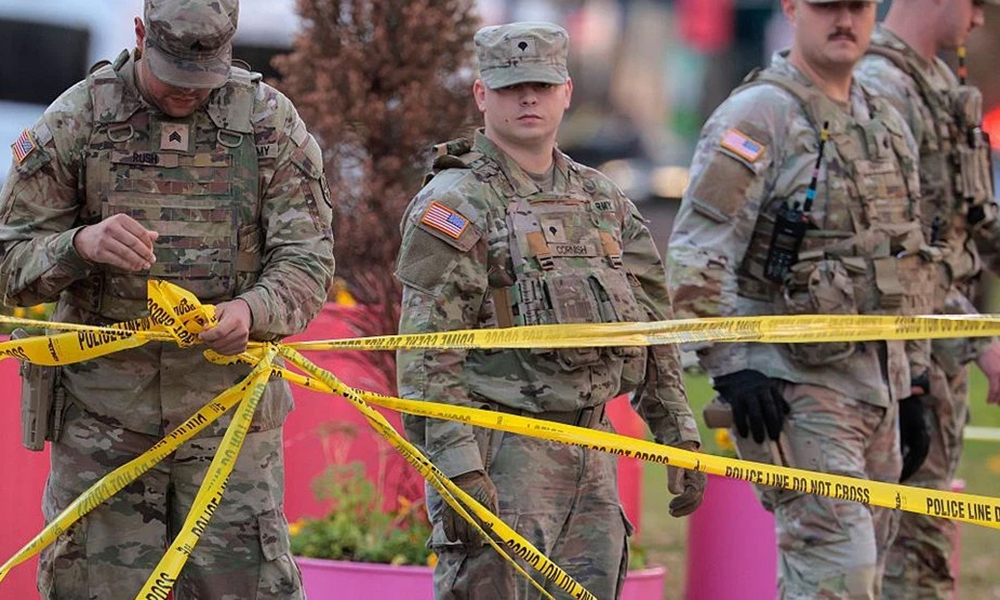
U.S. authorities are reviewing a classified terror watch list of about 18,000 people after it emerged that only one of three Afghan nationals arrested in recent high-profile cases was on the list, the New York Post reported, citing an intelligence source.
According to the NY Post, the revelation has raised concerns that some suspects may have been radicalized after arriving in the United States. The issue gained renewed attention following last month’s shooting of National Guard members in Washington, DC.
National Counterterrorism Center Director Joe Kent told lawmakers at a December 11 hearing that around 18,000 known or suspected terrorists entered the U.S. over a four-year period under the previous administration. Since then, officials have been combing through the database to assess potential threats and examine how certain individuals were admitted into the country.
Jaan Shah Safi was the only one of three recently arrested Afghan nationals listed in the Terrorist Identities Datamart Environment (TIDE), the U.S. government’s central terror database. Safi, who arrived in the U.S. in 2021 under Operation Allies Welcome, is accused of providing weapons and other support to ISIS-K. U.S. officials say he remains in ICE custody pending removal proceedings.
The other two suspects — Rahmanullah Lakanwal, charged with killing a National Guard member in Washington, and Mohammad Dawood Alokozay of Texas, accused of threatening a suicide attack — were not on the watch list, according to the Post. Intelligence officials cited in the report said this suggests they may have been radicalized after entering the United States.
The Post said the Office of the Director of National Intelligence has identified nearly 2,000 Afghans with suspected terror ties and continues to share intelligence with law enforcement agencies.
The issue has reignited debate over the vetting process used during the rapid evacuation of Afghans in 2021, when more than 100,000 people were brought to the United States.
Lawmakers and officials quoted by the New York Post called for closer scrutiny of those admitted during that period, amid growing political and public concern over national security and immigration policy.
Latest News
Afghanistan signs 30-year deal for marble mining in Daikundi

The Ministry of Mines and Petroleum of Afghanistan has signed a 30-year agreement with a private company to extract marble in Daikundi province.
Under the contract, the company will invest AFN 283 million in exploring and mining marble at the “Mesh-Uliya” site, spanning 16.74 square kilometers in central Daikundi.
Hedayatullah Badri, Minister of Mines and Petroleum, stated that the marble will be processed domestically before being exported abroad. He added that the Mesh-Uliya project is expected to create around 200 jobs, and the company is committed to supporting local communities through social initiatives.
Economic experts highlight that such investments, especially those focusing on domestic processing, are crucial for job creation, boosting exports, and strengthening the national economy. Analysts further note that the project will improve local infrastructure, expand social services, and enhance the economic and social well-being of Daikundi residents.
Since the return of the Islamic Emirate to power, efforts to develop Afghanistan’s mining sector have intensified, with multiple contracts signed in areas including cement, copper, iron, and lapis lazuli, involving both domestic and international companies.
Latest News
Passenger bus veers off Salang Highway, leaving 5 dead, dozens injured
-
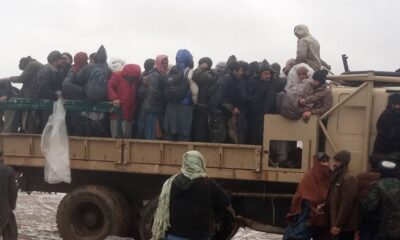
 Latest News3 days ago
Latest News3 days agoAfghan border forces prevent illegal entry of hundreds into Iran
-

 Latest News2 days ago
Latest News2 days agoPakistan summons Afghan diplomat over deadly attack in North Waziristan
-

 Latest News2 days ago
Latest News2 days agoAfghan health minister calls for medical cooperation between Kabul and New Delhi
-

 Latest News3 days ago
Latest News3 days agoJapan allocates nearly $20 million in humanitarian aid for Afghanistan
-

 Latest News2 days ago
Latest News2 days agoKarzai urges reopening of girls’ schools and universities for Afghanistan’s bright future
-

 Health4 days ago
Health4 days agoAfghanistan seeks India’s support in standardizing traditional medicine
-

 World4 days ago
World4 days agoUS readies new Russia sanctions if Putin rejects peace deal, Bloomberg News reports
-

 Business4 days ago
Business4 days agoAfghanistan-Kazakhstan banking ties discussed in Kabul meeting


